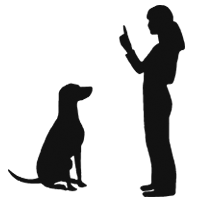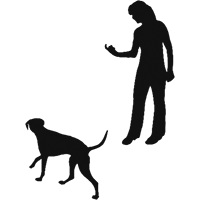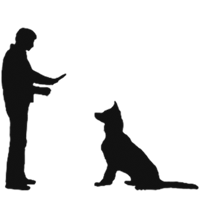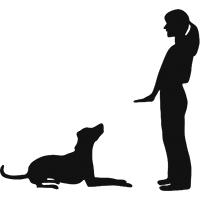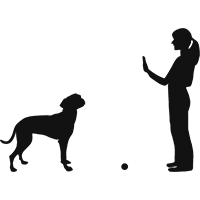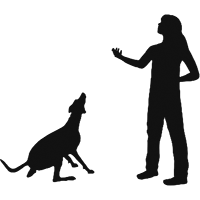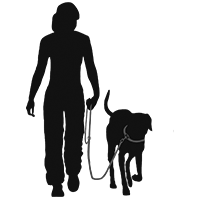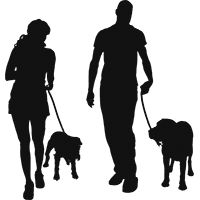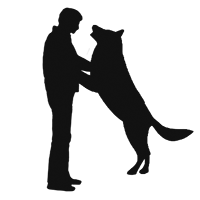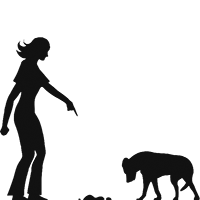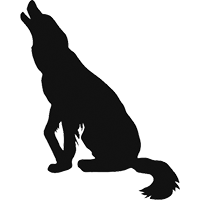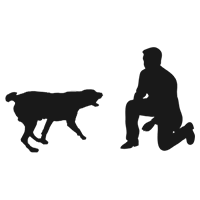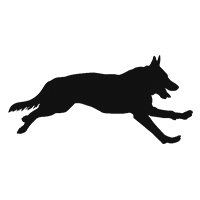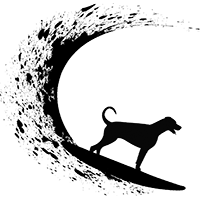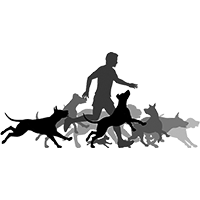Each client (human and canine) gets individualized training according to their unique needs and goals. As training continues, our services include the client getting a progress status report along with specific recaps on how to incorporate cues into obedience training. This includes a handy folder, tip sheets, and other resources for use as references.
Obedience Cues Learned:
|
FOCUS (WATCH ME)
This cue is used to get the dog’s attention and make eye contact; the goal strong “focus” allows you to work through distractions more easily. |
RELEASE CUE
Important cue as it marks the end of a behavior for both the dog and owner. It helps the dog have a clear understanding of the exact cue he must hear before breaking position. |
SIT/STAY
Sit is a natural position for dogs and can usually be learned quickly. This allows early success in training. The goal of sit/stay is for your dog to put their rear end on the floor and make eye contact and hold that position until released in a clam manner, waiting to be released. This behavior is a prerequisite for many other cues. Great for treating common problems such as jumping. |
DOWN/STAY
Down is used to get your dog to lie down in a spot chose by you the owner; the goal is to get your dog to lie down on verbal cue only. Never force a dog into position. |
|
LEAVE IT
Leave it is an effective exercise in helping develop a dog’s self-control. It can be used to tell a dog to back away from things you don’t want him to touch. It’s used to redirect the dog’s attention to an appropriate activity. |
COME/RECALL
A reliable recall or “come” is extremely important as it enables you to prevent injury to your dog but lets you give him more freedom. The goal of recall is to have your dog come to you and present in the Sit/Focus behavior directly in front of you each and every time, no matter what. |
LOOSE-LEASH WALKING (LLW)
This is what we required our dog’s to do most of the time. It does not demand close attention and the dog is not required to walk closely with you. LLW is used when your dog can investigate his surroundings visually without pulling on the leash (about 90% of the time). |
HEELING
A proper heel is a difficult exercise for many dogs – it requires a great deal of focus and coordination. It’s used when you need your dog to follow you closely and not be distracted by anything else that may be going on. Typically you need a dog to Heel about 10% of the time during a walk (such as “heel” as you pass another dog). |
Problem Behaviors Corrected:
|
JUMPING
Most dogs engage in friendly jumping as a way to greet people or play with them. However, some dogs use jumping as a way to make a dominant statement to people entering their territory or some use it to say hello. It’s important to first determine the dog’s reason for jumping. |
HOUSE TRAINING
This is one of the more common problems that dog owners must deal with. The basic principles of house training are relatively simple—although applying those principles can sometimes be tricky. Crate training and explicit schedules can help. |
BARKING
There are many different reasons why dogs bark—it’s usually a signal that another behavior problem exists. If you address that problem, in many instances, the barking stops on its own. There are six common types of barking and you must know why a dog is barking before attempting to control it. Knowing which one is critical so the training can be customized to the dog. |
NIPPING/MOUTHING
Nipping/mouthing is normal in puppies and can be friendly or more serious. Friendly nipping and mouthing usually occurs in puppies less than 5 months. A small percentage of puppies and dogs engage in serious nipping and mouthing as a way of saying “no.” Puppies and dogs must be taught alternative ways to greet, socialize and play with their human companions. |
|
DIGGING
A very common problem with many dogs—it’s important to understand the factors behind the behavior and then address them accordingly. Most often, the digging occurs when the owners are not present. “Correction” of the behavior (i.e. hollering at the dog) after the fact is a waste of time and counterproductive. |
BOLTING
When your dog dashes in, out or across a restricted threshold (i.e. doorway, curb). The solution is usually teaching your dog where the boundary to a threshold is and then the rules at each threshold. |
COUNTER-SURFING
Almost every dog is stimulated by the numerous scents attached to various foods being prepared on the counter. They will initially jump up on a counter because they are curious. If they are successful, they learned stealing food is very rewarding. This can be dangerous as some foods could be poisonous to your dog. |
UNRULY BEHAVIOR
Most owners underestimate their dog’s exercise requirements—it’s critical for any owner with an unruly down in the house needs to help their dogs get sufficient exercise by walking them or playing fetch with them daily. |

